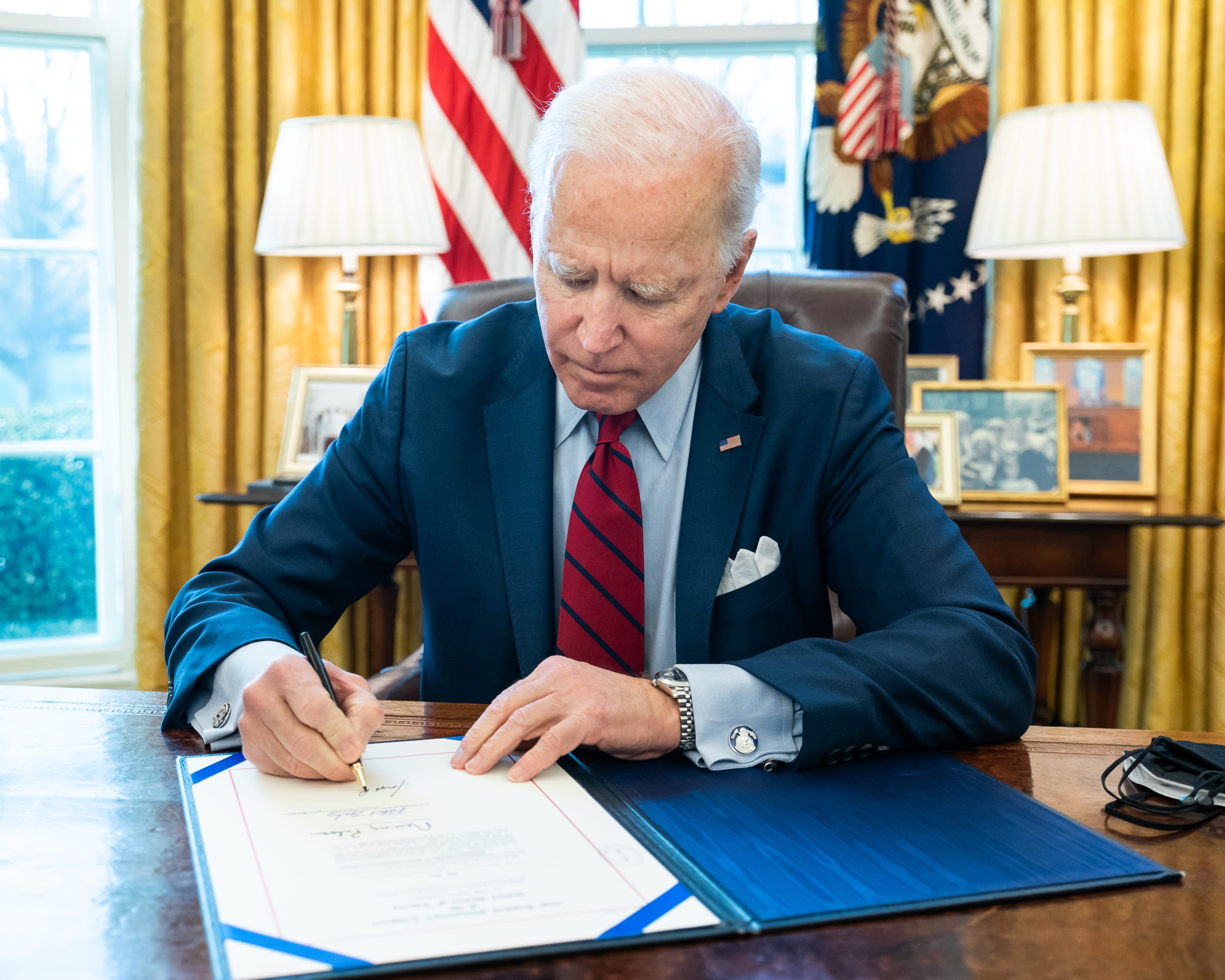
Should Farmers Hurt by Retaliatory Tariffs Get Financial Assistance? (S. 3258)
Do you support or oppose this bill?
What is S. 3258?
(Updated February 19, 2021)
This bill — known as the Assistance for Farmers Harmed by Tariffs on Exports Act — would make Trade Adjustment Assistance (TAA) available to farmers and producers whose exports are hurt by retaliatory tariffs caused by U.S. tariff increases. To qualify for assistance under this bill, farmers would have to qualify as a class of producers (i.e. soybean growers), and then each farmer would need to meet specific program requirements to demonstrate that trade actions and policies have negativity caused the commodity that they produce to decline.
Currently, TAA only gives assistance to farmers when commodity prices are driven down by excessive imports. Farmers hurt by retaliatory tariffs aren’t eligible for direct financial assistance from TAA.
Argument in favor
The trade war is putting significant economic pressure on farmers. Helping bolster farmers’ bottom lines will help them ride out the trade war either until new trade agreements are made, or they are able to adjust their financial planning to account for the new tariffs.
Argument opposed
The administration has already announced $12 billion in tariffs to help mitigate the trade war’s impact on farmers. Additionally, there may be World Trade Organization-related restrictions on aid to farmers, and some farmers themselves are skeptical about relying on government aid.
Impact
Farmers; producers; and Trade Adjustment Assistance.
Cost of S. 3258
A CBO cost estimate for this bill is unavailable.
Additional Info
In-Depth: Sen. Heidi Heitkamp (D-ND) introduced this bill to help farmers and ranchers recover from their losses from President Trump’s trade war:
“North Dakota’s farmers and ranchers don’t want a handout – they want access to markets to sell their goods. But as long as the administration pushes a trade war that lowers commodity prices and puts North Dakota agriculture at risk, Congress should act to give farmers and ranchers some certainty that they’ll be protected from losses caused by retaliatory tariffs against their goods. As producers watch prices for the crops in their fields decline, this legislation would give them some peace of mind that they’ll be able to access help if they need it – but the only truly long-term solution to strengthen our farm economy is to give up this misguided trade war and work to expand markets for our farmers and ranchers. Right now, I fear that farmers and ranchers will feel long-term ramifications from this trade war because of the loss of contracts and markets, many of which took years to create. We can and must modernize current trade deals to meet the changing needs of our economy, but this trade war is treating rural America like collateral damage – and that has to end.”
Daren Bakst, an agricultural expert at the Heritage Foundation, is skeptical about aid to farmers to mitigate the effects of the trade war. He said, “a bad tariff policy shouldn’t be used to justify other bad policies,” adding that “the administration hasn’t made the case why existing programs aren’t sufficient for [the] alleged harm [caused to farmers by the trade war].” Bakst notes that farm households are now wealthier than most, and argues that they will not be unduly burdened by the trade war’s impact.
Adding to Bakst’s argument, the financial impact on soybean growers — who should be most affected by the trade war by virtue of their products being America’s single largest agricultural export to China — has been limited thus far. To some observers, this raises questions about the necessity of aid to farmers.
At the international level, too much farm aid may cause the U.S. to run afoul of the World Trade Organization (WTO). Under WTO rules, countries are limited in how much aid they can offer to agriculture. The U.S. can only offer about $19 billion a year in subsidy-like supports to its agriculture industry without getting in trouble — and it can be tricky to properly calculate and categorize different kinds of farm support into accepted and unacceptable boxes.
Joe Glauber, a former chief economist at the USDA notes, “This is a lot of money, and it’s difficult to try to make it fit into these WTO boxes; there’s some potential to go over… One way or another, this will get a lot of attention in Geneva other the next six months.” Additionally, there is also the risk that other countries could file a challenge if they believe U.S. farm support distorts global markets in any way, which they could successfully make a case for.
While farmers and agricultural lobbies have cautiously welcomed assistance to help mitigate the brunt of the administration’s trade war, most have stressed that they’d prefer to have more access to overseas markets such as those that would’ve been opened by the Trans-Pacific Partnership or a similar trade pact with the European Union. Zippy Duvall, president of the American Farm Bureau Federation, made the following statement after the Trump administration announced $12 billion in aid for farmers affected by the trade war:
“[A]gricultural assistance… will provide a welcome measure of temporary relief to our farmers and ranchers who are experiencing the financial effects of the trade war. This should help many of our farmers and ranchers weather the rough road ahead and assist in their dealings with their financial institutions. We are grateful for the administration’s recognition that farmers and ranchers needed positive news now and this will buy us some time. This announcement is substantial, but we cannot overstate the dire consequences that farmers and ranchers are facing in relation to lost export markets. Our emphasis continues to be on trade and restoring markets, and we will continue to push for a swift and sure end to the trade war and the tariffs impacting American agriculture.”
Brian Kuehl, executive director of the pro-free trade Farmers for Free Trade, argues that aid does not meet farmers’ need for contracts, rather than government assistance, for stability. He argues that “the best relief for the president’s trade war would be ending the trade war. [Aid] would only be a short-term attempt at masking the long-term damage caused by tariffs.”
Some farmers’ organizations also oppose aid as another complication in the maze of federal subsidies and regulations they must already wade through to make a living. Casey Guernsey, a Missouri farmer and spokesman for Americans for Farmers & Families, an anti-tariff group, says, “We don’t want to be dependent on another government program. We already are very much in a situation in farming, in agriculture across the board, where we are held hostage to decisions made in Washington.”
There are no cosponsors of this bill.
Of Note: Trade Adjustment Assistance was created in 1962 to help workers harmed by changing trade policies. In 2002, it was adjusted to make farmers eligible for assistance if commodity prices were driven down by excessive imports.
TAA is currently authorized at $90 million per year — which will not go far in the current situation. Therefore, Sen. Heitkamp has suggested using money from increased tariffs to fund the TAA to help producers affected by retaliatory tariffs.
Since the beginning of President Trump’s trade war, the administration has announced over $12 billion in programs to assist farmers and ranchers. Agriculture Secretary Sonny Perdue, along with USDA officials, announced three programs on July 24th: the market facilitation program, which will provide payments to producers dealing with disruptive markets; the food purchase and distribution program, which will purchase surplus goods and distribute them to food programs and food banks; and the trade promotion program, which will work with the private sector to develop new trade markets. All three programs are authorized under the Commodity Credit Corporation, a Depression-era program that was originally created to compensate farmers for losses sustained due commodity price fluctuations.
The market facilitation program focuses on producers of soybeans, sorghum, corn, wheat, cotton, dairy and hogs — U.S. agricultural products targeted by retaliatory tariffs. The food purchase and distribution program will look to buy fruits, nuts, rice, legumes, beef, pork and various segments of dairy.
Sen. Heitkamp has expressed mixed feelings about USDA’s $12 billion aid package. While she acknowledges that anything to “bridge” the short-term impact of the trade war is helpful, she worries about the cost of the program, pointing out that “this is $12 billion that we are borrowing. We don't have $12 billion sitting around. We already have a huge deficit problem in this country."
Similarly, Sens. Bob Corker (R-TN), Lisa Murkowski (R-AK), and Ben Sasse (R-NE) have all expressed doubts about aid to farmers to mitigate the effects of the trade war, albeit for different reasons. Sen. Corker opposes borrowing money to fund aid:
“You have a terrible policy that sends farmers to the poorhouse, and then you put them on welfare, and we borrow the money from other countries… It’s hard to believe there isn’t an outright revolt right now in Congress.”
And Sen. Murkowski questions the decision to single out farmers for help when other industries, such as manufacturing and energy, also stand to lose in the trade war. She asks, “Where do you draw the line?” on providing aid.
Finally, Sen. Sasse contends that aid to farmers are a band-aid solution:
“This trade war is cutting the legs out from under farmers, and the White House’s ‘plan’ is to spend $12 billion on gold crutches. This administration’s tariffs and bailouts aren’t going to make America great again, they’re just going to make it 1929 again.”
Media:
Summary by Lorelei Yang
(Photo Credit: iStock.com / fotokostic)The Latest
-
 Biden Signs Ukraine, Israel, Taiwan Aid, and TikTok BillWhat’s the story? President Joe Biden signed a bill that approved aid for Ukraine, Israel, and Taiwan, which could lead to a ban read more... Taiwan
Biden Signs Ukraine, Israel, Taiwan Aid, and TikTok BillWhat’s the story? President Joe Biden signed a bill that approved aid for Ukraine, Israel, and Taiwan, which could lead to a ban read more... Taiwan -
 Protests Grow Nationwide as Students Demand Divestment From IsraelUpdated Apr. 23, 2024, 11:00 a.m. EST Protests are growing on college campuses across the country, inspired by the read more... Advocacy
Protests Grow Nationwide as Students Demand Divestment From IsraelUpdated Apr. 23, 2024, 11:00 a.m. EST Protests are growing on college campuses across the country, inspired by the read more... Advocacy -
 IT: Here's how you can help fight for justice in the U.S., and... 📱 Are you concerned about your tech listening to you?Welcome to Thursday, April 18th, communities... Despite being deep into the 21st century, inequity and injustice burden the U.S. read more...
IT: Here's how you can help fight for justice in the U.S., and... 📱 Are you concerned about your tech listening to you?Welcome to Thursday, April 18th, communities... Despite being deep into the 21st century, inequity and injustice burden the U.S. read more... -
 Restore Freedom and Fight for Justice With GravvyDespite being deep into the 21st century, inequity and injustice burden the U.S., manifesting itself in a multitude of ways. read more... Criminal Justice Reform
Restore Freedom and Fight for Justice With GravvyDespite being deep into the 21st century, inequity and injustice burden the U.S., manifesting itself in a multitude of ways. read more... Criminal Justice Reform
 Climate & Consumption
Climate & Consumption
 Health & Hunger
Health & Hunger
 Politics & Policy
Politics & Policy
 Safety & Security
Safety & Security
